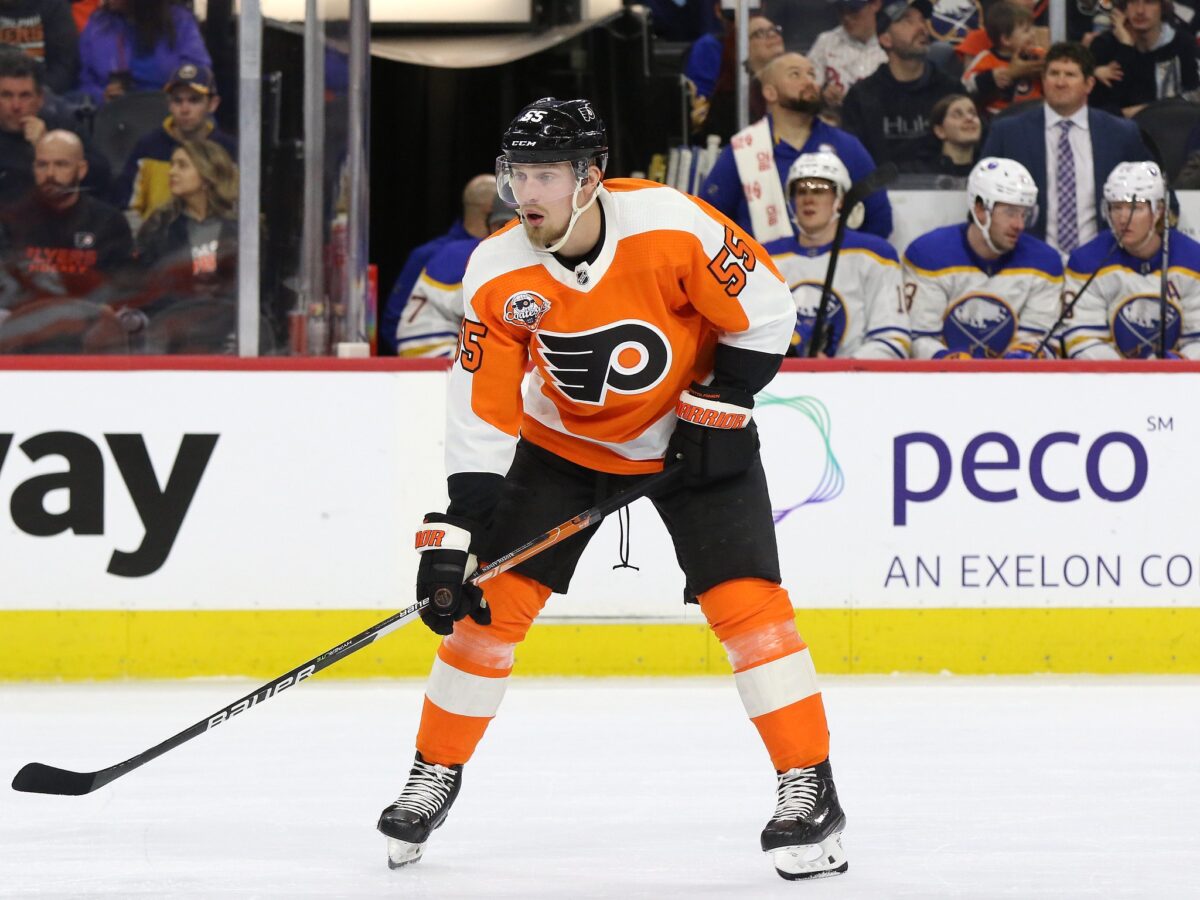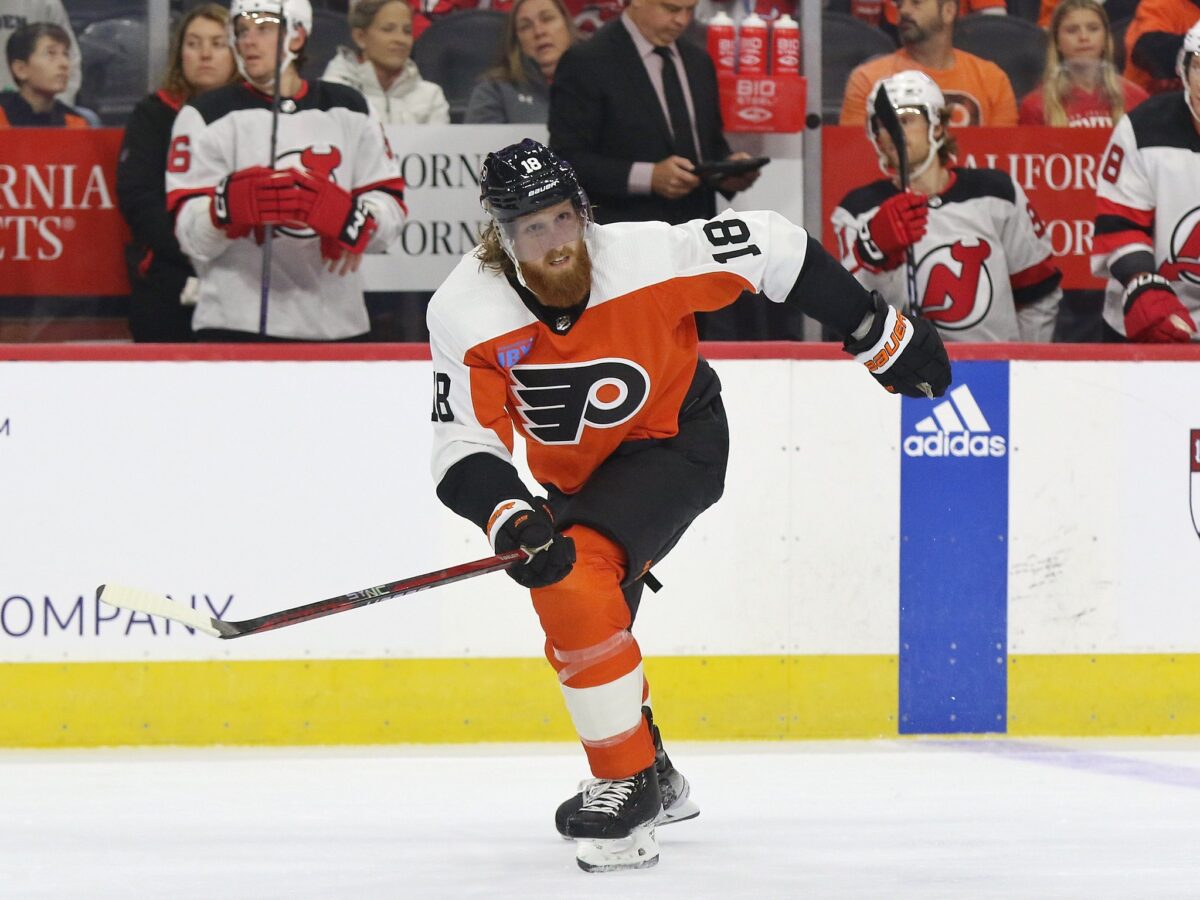It’s hard to shake a reputation in sports, especially when you’re playing for a losing team. Rasmus Ristolainen made his NHL debut on Oct. 2, 2013, and he has known failure more than just about anyone since then. The Buffalo Sabres lost 402 games between his first game and the end of the 2020-21 season, 35 more than any other team.
There were supposed to be brighter days ahead for him when the Sabres dealt him to the Philadelphia Flyers that summer. Instead, the Flyers lost 108 games in his first two seasons, the sixth most of any team. Ristolainen has played 683 regular-season games, more than any active player who has not reached the playoffs. He has had nine head coaches in 11 seasons and received big minutes despite heavy criticism from new school fans who thought he was barely deserving of a regular role.
So, when Ristolainen signed a five-year, $25.5 million extension on March 10, 2022, it was easy to guess where things were going. The Flyers sat 28th in the league as Ristolainen put pen to paper, and they traded their captain, Claude Giroux, less than a month later. The general manager who signed the contract was fired barely a year later, and the Flyers committed to a rebuild immediately. In other words, a 28-year-old making big money is not an ideal fit for that situation.
But the Flyers have surprised people this season. Their 11-9-1 record puts them firmly on the playoff bubble and includes wins over many contenders. It would be another thing to sustain that success over the course of a full season, and entering Saturday’s matchup against the New York Islanders, the Flyers had lost two straight, scoring just twice in that span.
However, Philadelphia got a boost in that game in the form of Ristolainen. After missing the first 20 games of the season due to a lower-body injury, he made his season debut just under a month after his 29th birthday. He returned to the ice on the heels of arguably his most successful season and for a team with one of the more successful 20-game stands of his career. The Flyers survived without him, but make no mistake, one way or another, Ristolainen is an important part of the team’s future.
Reviewing Ristolainen’s 2022-23 Season
Last season was the first of Ristolainen’s big extension. There were two constants in Ristolainen’s play with the Sabres — he put up lots of points and hits, but they were mitigated by his overall 5-on-5 play. From 2015-16 to 2019-20, Ristolainen was 19th among NHL defensemen in scoring.
His physicality, though, was the hallmark of his game — and often, his undoing. To rack up hits, Ristolainen often put himself out of position, leading to defensive breakdowns and goals against. He was a negative relative to his teammates in expected goals percentage every season he was with the Sabres.
Though that trend changed in his first season with the Flyers, the glaring mistakes remained. Deeper advanced stats models like Dom Luszczyszyn and JFresh still rated him as one of the poorer players in the league. These stats often graded out exactly the opposite of how Ristolainen was viewed by his coaches. He played big minutes throughout his time in Buffalo and consistently held down a top-four spot in his first season with the Flyers.
Part of that was out of necessity due to a lack of better players on the Sabres and Ryan Ellis’ career-ending injury four games into his Flyers career. But it created a large divide that only the savviest, most new-school coach could correct.

Or head coach John Tortorella. Tortorella was not a fan of Ristolainen’s play when he took over as the ninth head coach in the defenseman’s career. In all likelihood, he will be the first to coach Ristolainen for more than two seasons. He cracked the 20-minute mark just once in the season’s first 18 games. Although he missed the first six due to injury and another after playing in six games when Tortorella made him a healthy scratch.
“I don’t think he’s played well enough. Everything about his game, I think he needs to be better. That’s the easiest way of me explaining it,” his coach said (from ‘Tracking Rasmus Ristolainen’s Steady Improvement,’ Hockey IQ Newsletter, Oct. 8, 2023).
But by the end of the season, Tortorella’s tune turned. First, Ristolainen went to work with the coaching staff and finally seemed to understand the problems that had been plaguing him for years. He cleaned up his defensive game, although, for a while, it came at the expense of any scoring whatsoever. Ristolainen’s first point didn’t come until Dec. 23, and his first goal almost a month after that. However, from Jan. 17 on, Ristolainen scored 18 points in 37 games, a rate comparable to the best scoring pace of his Sabres days.
“Yeah, it’s kind of almost like two seasons in one,” Ristolainen said at the end of the campaign. “First half (I) was pretty bad, but then probably around after the Christmas break, I started to get going” (from ‘Did the Flyers fix Rasmus Ristolainen? A look at his improvements and whether he can sustain them’, The Athletic, Aug. 7, 2023).
It showed in his ice time, which climbed back to 20 minutes on a frequent basis. Tortorella praised his improvements as the season progressed as well. When the 2021-22 season ended, Ristolainen’s market value, according to Luszczyszyn’s model, was just $1.4 million (from ‘NHL Player Cards: Philadelphia Flyers,’ The Athletic, April 19, 2022). A year later, it climbed up to $4.8 million (from ‘NHL Player Cards: Philadelphia Flyers,’ The Athletic, April 3, 2023).
Where Does Ristolainen Fit?
As mentioned above, part of the reason why Ristolainen always received such a prominent role was because his teams didn’t have anyone better. But two of the better performers on the 2023-24 Flyers play right defense. Travis Sanheim is enjoying arguably the best stretch of his career after moving to the right side, and Tortorella confirmed he’ll be staying there for the foreseeable future. Sean Walker has also thrived this season, largely filling the second-pair role Ristolainen held down last season.
In his first game back, Ristolainen skated with Marc Staal, another recent returnee from injury who replaced Egor Zamula. He played just under 18 minutes, delivering a solid game in which he and Staal were 1-2 on the Flyers in expected goals percentage.

There are no guarantees that Ristolainen will maintain the strides he made last season, let alone build on them. But he showed that he’s capable of putting the skillset inside his 6-foot-4, 208-pound frame to good use. The Flyers, of course, used a first-round pick on a right-handed defenseman in June, drafting Oliver Bonk 22 overall, and prospects Emil Andrae (a left-handed shot who’s played the right before) and Ronnie Attard are close to NHL-ready.
Related: Flyers’ Early Success Might Change Rebuild Path
Ristolainen won’t be the first player to be moved if/when those players (or others) are ready. Staal will almost certainly be a Flyer for just this season. Walker is an unrestricted free agent at the end of the year, too, as is Nick Seeler. Ristolainen will need at least another solid campaign to show the league he has trade value, and missing 20 games certainly doesn’t help.
For now, his return allows the Flyers to more comfortably rotate three pairs, which is especially helpful for a team lacking a true No. 1 defender. Ristolainen will never be that type of player. But the stability and success that have eluded him throughout his career could be starting to round into shape.
